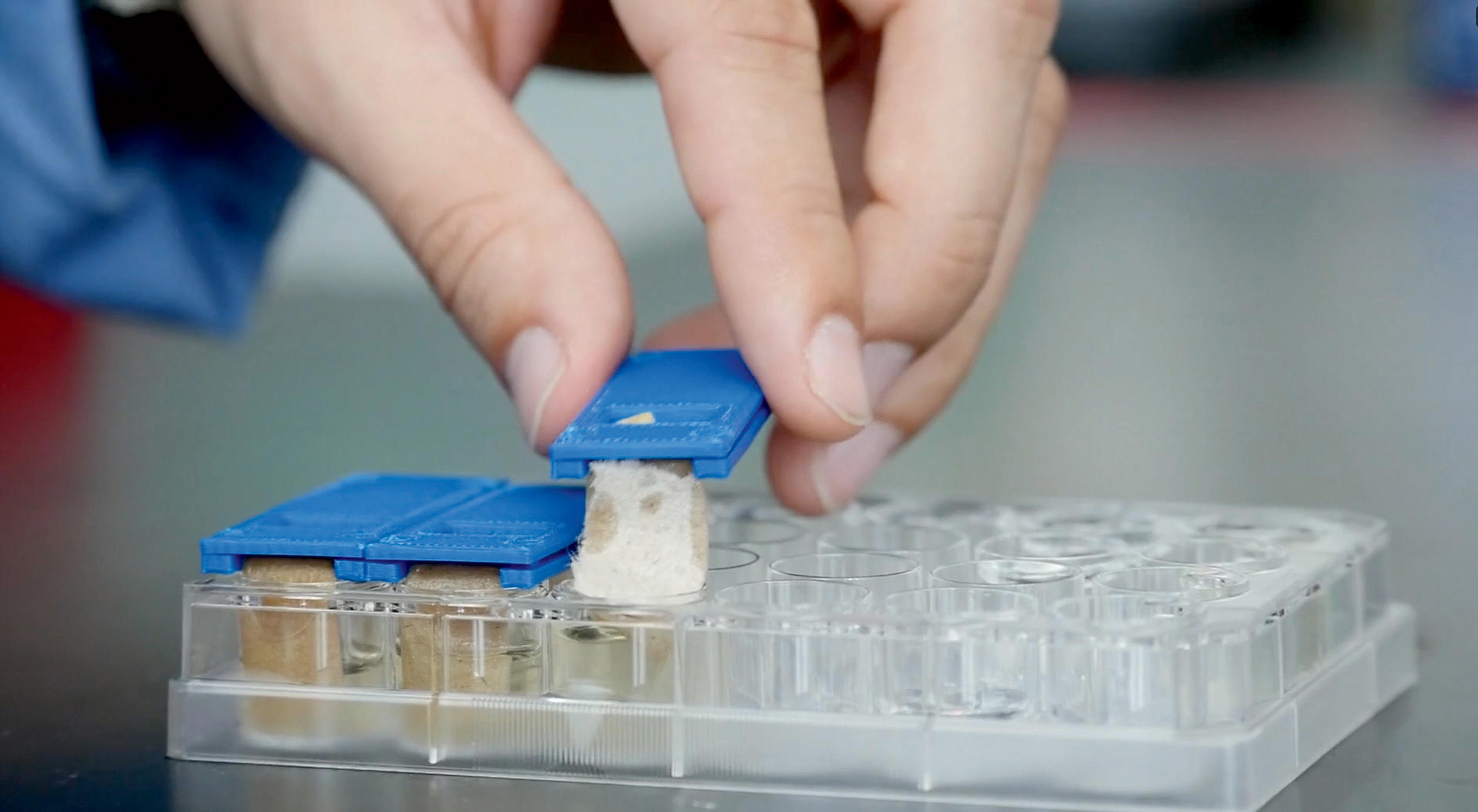In many developing countries, people die of treatable infections simply because physicians can’t diagnose them fast enough. Part of the problem is that too few medical centers possess modern diagnostic equipment, which means that physicians often have to send blood samples to laboratories hundreds of miles away — a process that can take several days and delay urgently needed treatment.
Now, a team of Columbia scientists has developed a potentially lifesaving solution: a low-cost, portable diagnostic tool that is as easy to use as a home pregnancy test. The device, which is designed to be used onsite by medical workers with minimal training, contains baker’s yeast that has been genetically modified so that it changes color in the presence of a variety of pathogens.
“Yeast, like all fungi, has sensors for identifying members of its own species, and we manipulated its sensors to detect other microorganisms instead,” says lead scientist Virginia Cornish ’91CC, the Helena Rubinstein Professor of Chemistry.
Cornish and her colleagues have so far demonstrated the tool’s effectiveness in detecting ten different fungal pathogens, including Candida albicans and Paracoccidioides brasiliensis, which are ubiquitous in some parts of the world and can prove deadly especially to people with weakened immune systems. Physicians usually need elaborate molecular analyses of a patient’s blood in order to identify them, says Cornish. “But using our device, they’d see the results at the point of care in just two or three hours.”
Another advantage of the new diagnostic tool is that it can be manufactured and operated very cheaply, since its only active ingredient is baker’s yeast.
“We estimate that it will cost less than one cent per sample to use,” says Miguel Jimenez ’17GSAS, a former chemistry PhD student in Cornish’s lab who worked on the project alongside former graduate student Nili Ostrov ’12GSAS and postdoctoral researcher Sonja Billerbeck.
The Columbia scientists believe that their tool could ultimately be adapted to detect many viruses and bacteria, including the Vibrio cholerae bacterium, which causes cholera. Cornish says they are currently working with global-health organizations to determine their needs.
“The possibilities, as we see them right now, are limitless,” she says. “We’ve just opened the door to this exciting new technology.”



